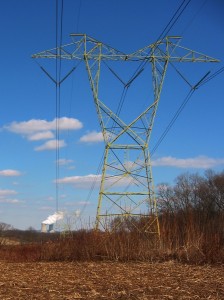“A clean air solution is needed to mitigate the movement of carbon through electricity generation, as the current methods of generating electricity produce a significant amount of emissions, and this is expected to rise.”
Electricity is important, as it is the engine that drives everyday operations and technological advances. However, our society is growing at an unprecedented rate and our electricity demands continue to rise exponentially. We are projected to use 28 terawatts worldwide in 2110, compared to the 13 TW of electricity our society uses now (Lewis, 2005).
In addition, the current generation methods used for energy produces a substantial amount of carbon dioxide emissions into the atmosphere. The purpose of my research is to show that nuclear energy is a feasible method for mass production of energy in the future, as nuclear energy is a clean air generation method, it provides a substantial amount of energy, and it has the ability to utilize a closed fuel cycle enabling for a more efficient use of supplies. My research also explores the concerns that we need to address before large-scale deployment including safety reputation of nuclear energy, operational costs, and waste mitigation.
While nuclear energy has a bad reputation from the Three Mile Island and Chernobyl incidents, the Nuclear Regulatory Commission (NRC) is committed to a safe future of nuclear energy generation as it can play a key role in tomorrow’s energy generation.
Since Nuclear energy is a clean air generation method, it does not release carbon dioxide emissions when in operation. A clean air solution is needed to mitigate the movement of carbon through electricity generation, as the current methods of generating electricity produce a significant amount of emissions, and this is expected to rise. Nuclear energy produces a substantial amount of energy for its footprint. The findings presented in my research compare a San Diego County nuclear power plant to a nearby wind farm, and explore the efficiency of both based on the amount of land the generation stations utilize.
One of the largest hurdles to large-scale deployment of nuclear energy is the disposal of waste and the safety of transporting the waste to the site. An alternate waste “reuse” method can be implemented to breed the used uranium into plutonium to cut down on waste, which is currently being done successfully to power the country of France using nuclear energy.
We cannot rely solely on nuclear power in the future, however, we will probably see more nuclear energy plants being built and more nuclear reactors deployed during the next 100 years. Though not the complete answer to solving our energy crisis, nuclear energy is a feasible method of planning for tomorrow’s energy requirements.



